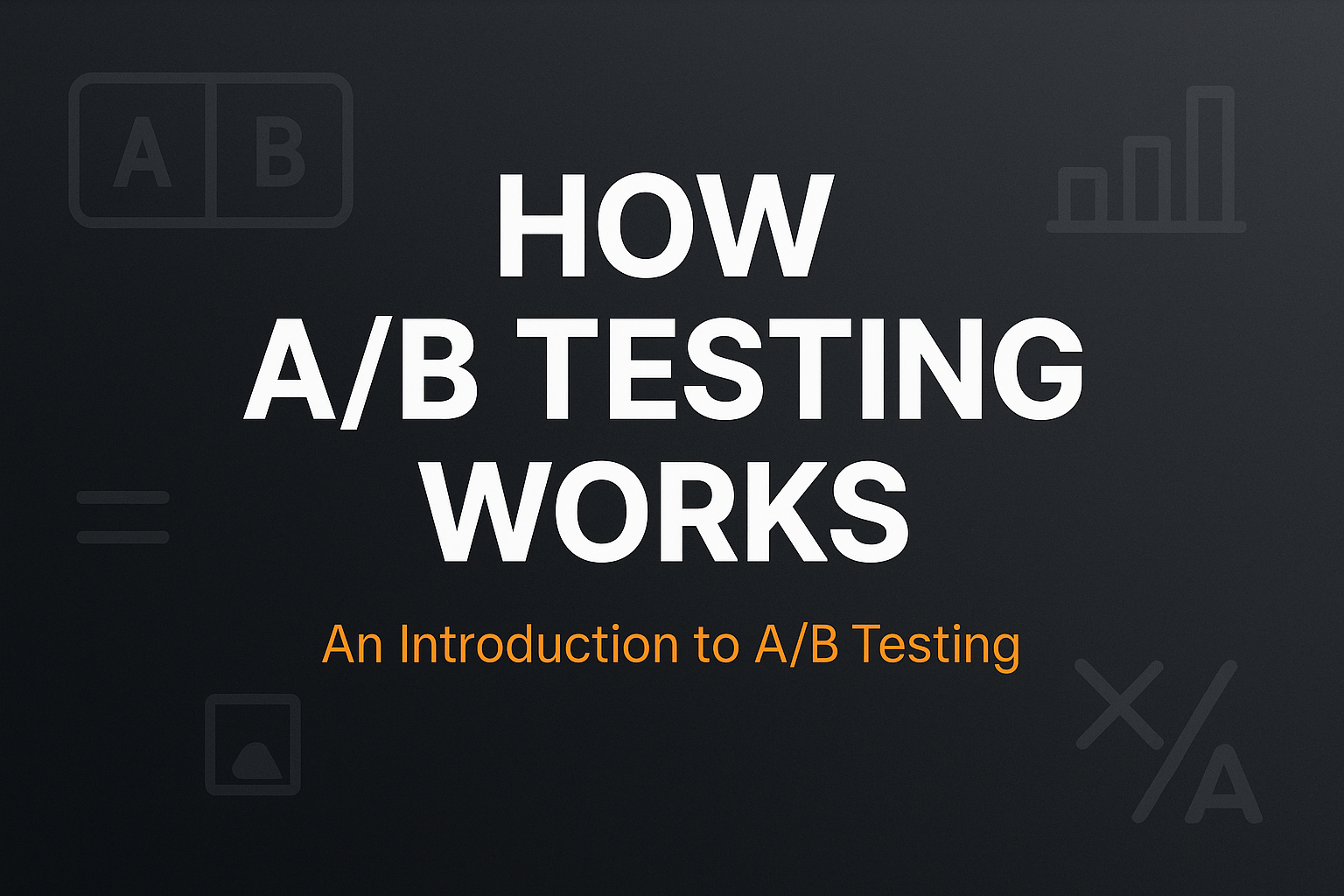Marketers often talk about A/B testing like it’s the ultimate growth hack. It is powerful — but only if you understand how it works, when to use it, and when it’s not worth the effort.
For small and mid-sized businesses, knowing the basics of A/B testing helps you decide whether it’s the right approach, or whether simple, data led changes are a smarter first step.
What Is A/B Testing?
A/B testing (also called split testing) compares two versions of a page, email, or ad to see which performs better.
- Version A = your control (the current design).
- Version B = your variation (the new idea).
Visitors are randomly split between A and B. Their behaviour is tracked, and you measure which version drives more conversions.
Related: CRO Without Expensive Tools explains how SMEs can improve conversions even without advanced testing platforms.
Why Businesses Use A/B Testing
The value of A/B testing lies in replacing guesswork with evidence. Instead of copying what competitors do, you learn what works for your customers.
- Evidence over opinion: Confirms if a change actually improves results.
- Risk management: Test on a portion of traffic before rolling out sitewide.
- Compound growth: Small wins stack up into major improvements over time.
How an A/B Test Runs in Practice
- Spot a problem
Use analytics (e.g. GA4 Made Simple) to see where users drop off. - Form a hypothesis
Example: “If we reduce checkout fields, more users will complete their purchase.” - Build the variation
Version B = checkout with fewer fields. - Split the traffic
Half see A, half see B. - Run until significant
Keep it live long enough to reach statistical confidence. - Analyse and act
If B wins, roll it out sitewide.
When A/B Testing Is Worth Doing
- Enough traffic: Without volume, you won’t reach meaningful results.
- One variable at a time: Button copy, headline, form length.
- Need for proof: When stakeholders want data before approving changes.
When It Isn’t
- Low traffic sites: Tests will run forever without significance.
- Full redesigns: Small tests won’t fix a broken experience.
- Chasing myths: Button colour tweaks rarely move the needle — focus on real friction points.
See 5 CRO Fixes to Boost Conversions for proven changes that often beat micro-tests.
Common Pitfalls
- Ending tests too early.
- Testing too many variables at once.
- Ignoring the “why” behind results (qualitative feedback still matters).
FAQ
- What is A/B testing in simple terms?
- It’s a controlled experiment where you show two versions of a page or element to different audiences to see which performs better against a specific goal.
- What can SMEs test first?
- Start with headline copy, CTA text, form length, and key visuals. These small changes often have the biggest measurable impact.
- How long should an A/B test run?
- Until you’ve reached at least 95% statistical confidence and a meaningful sample size—usually one to two business cycles for most SMEs.
- Do I need expensive tools for A/B testing?
- No. Many CMS platforms, GA4, or low-cost tools like Google Optimize alternatives can handle simple split tests effectively.
- What metrics decide a winning variant?
- Conversion rate, click-through rate, or lead form completion—whatever aligns most closely with the page’s goal.
- What’s the biggest mistake in A/B testing?
- Running too many tests at once or stopping early. Test one clear variable, run it long enough, and act on real data—not early noise.
The Takeaway
A/B testing is a powerful CRO tool, but it’s not a magic bullet. It’s best suited for businesses with enough traffic, clear hypotheses, and patience. For smaller sites, data led improvements and structured iteration may deliver quicker wins without the wait.
Not sure whether A/B testing is right for your business? Book a discovery call.
